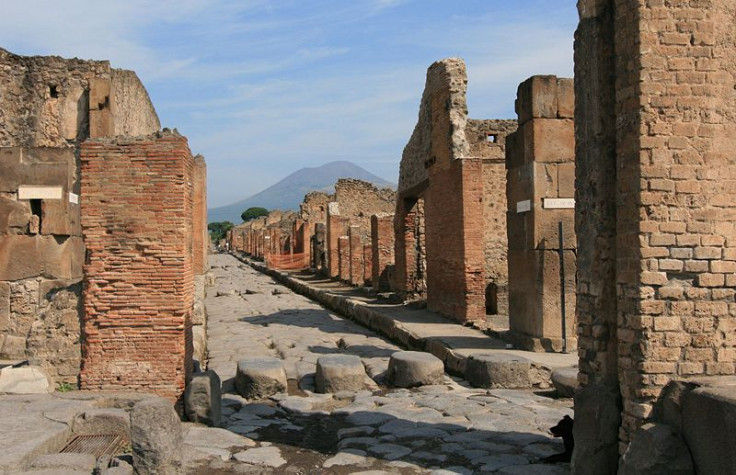Ancient Pompeii Diet Consisted Of Giraffe, Flamingo, Sea Urchin And Other ‘Exotic’ Delicacies

Pompeii’s enigmatic history has long captivated archaeologists and tourists alike. While its name often conjures up images of its violent end, new research into Pompeiians daily lives is broadening our understanding of this ancient Roman culture, particularly their eating habits, before Mt. Vesuvius brought it all crumbling down nearly 2,000 years ago.
Archaeologists from the University of Cincinnati have spent the past decade excavating a row of building plots in a non-elite district of the ancient Roman city. Some of the buildings, which represent 20 store fronts, date back to the 6th century B.C.
According to a Steven Ellis, a University of Cincinnati associate professor of classics who presented his team’s findings at an Archaeological Institute of America conference in Chicago on Jan. 4, many of the ancient establishments were once restaurants. Researchers recovered mineralized and charred food contents from the buildings’ drains and toilets, and analyzed their content. What they found surprised them.
"The traditional vision of some mass of hapless lemmings -- scrounging for whatever they can pinch from the side of a street, or huddled around a bowl of gruel -- needs to be replaced by higher fare and standard of living, at least for the urbanites in Pompeii,” Ellis said in a statement.
Archaeologists discovered remnants of food that would have been widely available and inexpensive in ancient Italy, like grains, fruits, olives, lentils, local fish, nuts and chicken eggs. They also uncovered evidence that Pompeiians enjoyed a variety of exotic foods, some of which would have been imported from outside Italy, including sea urchins, flamingos and even the butchered leg joint of a giraffe. According to Ellis, this was the first giraffe bone ever found during an archaeological excavation of ancient Roman Italy.
"How part of the animal, butchered, came to be a kitchen scrap in a seemingly standard Pompeian restaurant not only speaks to long-distance trade in exotic and wild animals, but also something of the richness, variety and range of a non-elite diet,” Ellis said.
At its height, Pompeii was home to 20,000 people. In 79 A.D., the town, located near modern-day Naples, was brought to a hellish end when Mt. Vesuvius erupted with an explosion 100,00 times the thermal energy released by the Hiroshima bombing.
"Mt. Vesuvius was blazing in several places ... A black and dreadful cloud bursting out in gusts of igneous serpentine vapor now and again yawned open to reveal long, fantastic flames, resembling flashes of lightning, but much larger . . . Cinders fell . . . then pumice-stones too, with stones blackened, scorched and cracked by fire,” Pliny the Younger, an author who witnessed the eruption, described the event in a letter.
Previous archaeological studies of Pompeii have revealed an advanced society with a complex water system, an amphitheater, a port and a gymnasium. There were great villas, forums and bath houses, and although control of the city frequently changed hands, the town remained an important passageway for goods that arrived by sea and were headed to Rome or southern Italy.
© Copyright IBTimes 2024. All rights reserved.






















